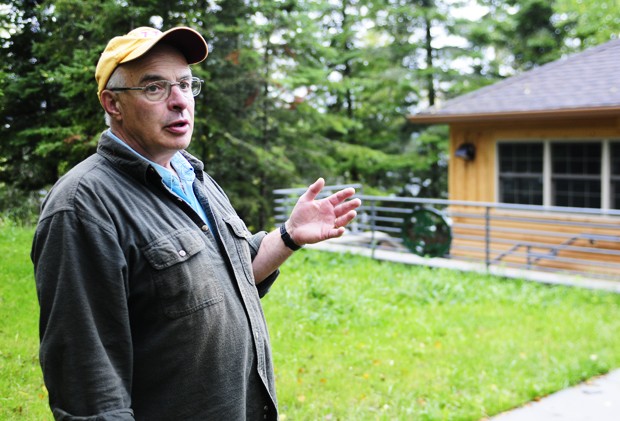Itasca, Minn. âÄî At a wilderness teaching laboratory spread across 58 acres of the shores of the Mississippi River headwaters, Jon Ross is organizing one of the most important parties of his career. The University of Minnesota Itasca Biological Station and Laboratories celebrates its 100 year anniversary this Friday, and Ross, the associate program director, is hoping the campus lands a much needed birthday present âÄî more than $8 million in funding. Throughout the last century, the Itasca campus has earned a solid reputation among the biological sciences community. But that reputation is now literally crumbling at its foundation as its buildings and technology grow more outdated every season. Mice crawl through the computer lab, ants march through the cracks in one of the teaching classrooms and several of the campusâÄôs 55 buildings have problems with their foundations. While there are two brand new buildings on campus, the majority of the facilities cannot be used in the wintertime and one building has already been deemed partially condemned by inspectors. âÄúWhen [faculty and students] see something like this, itâÄôs just not very attractive,âÄù Ross said. âÄúIt is kind of embarrassing.âÄù The only fix is more funds. ThatâÄôs why Ross and his colleagues will host a three day anniversary celebration for 169 major players in the UniversityâÄôs biological sciences arena. Through the anniversary celebration and other fundraising efforts they hope to raise at least $1 million in private money, said Elizabeth Wroblewski, chief administrative officer at the College of Biological Sciences. An online auction was held in September and all proceeds will be used to renovate classrooms and buildings at Itasca. The auction featured items such as art, weekend getaways at Itasca cabins and special dinners with University faculty. The private funds combined with a two-phase, $8.4 million capital request from the state should be enough to give the station a proper facelift, Ross said. The University will pick up one-third of this tab. âÄúIn order to continue our important programming [at Itasca], weâÄôre working on all fronts to raise awareness and raise resources,âÄù College of Biological Sciences Dean Robert Elde said. But the request, which must first be approved by the University Board of Regents, comes at a time when the state and University budgets are slim. The College of Biological Sciences originally wanted $25 million for the station, but pared back that request as the financial reality set in, Wroblewski said. âÄúIt was a very thorough and comprehensive plan,âÄù but also âÄúvery expensive,âÄù she said. Also on the capital request list are much flashier items like $36.5 million for Folwell Hall renovations and $80 million for a new physics and nanotechnology building. If the station is granted the money, CBS plans to build a large, up-to-date research and teaching facility and winterize buildings. The upgrades will help attract prominent researchers who had previously overlooked Itasca, Ross said. âÄúThis is already a problem for us,âÄù he said. âÄúItâÄôs hard to attract new researchers and keep them here.âÄù Why Itasca? Despite its ruggedness, more than 1,000 people visit the station each year to do research and take classes that range from wildlife photography to ornithology, the study of birds. The station also hosts about 18 research projects annually, Ross said. âÄúIt has a long history of being an important place,âÄù said Stephanie Xenos, assistant director of communications for the College of Biological Sciences. The station is a hotspot for field learning and research because of the pristine habitat that surrounds it. It is tucked deep inside the mostly untouched forests of 32,000-acre Itasca State Park. Since there is no agriculture near the station, the Mississippi River is unpolluted in that area and perfect for water research projects, Ross said. The Itasca campus is commonly known for its Nature of Life program, a three-day excursion for first-year biology students, Xenos said. The program is intended to help students âÄúfind out what itâÄôs like to study biologyâÄù and âÄúform relationships with their peers,âÄù Xenos said. Jacob Dunn, a first-year biochemistry student, attended the Nature of Life program in summer 2009. âÄúIt seems like a very productive place for where you can get a feel for research,âÄù he said. The research and instruction labs are high on the agenda for updates at Itasca. One of the goals of the renovation project is making the facilities âÄúmore useful for a modern science setting,âÄù Xenos said.











